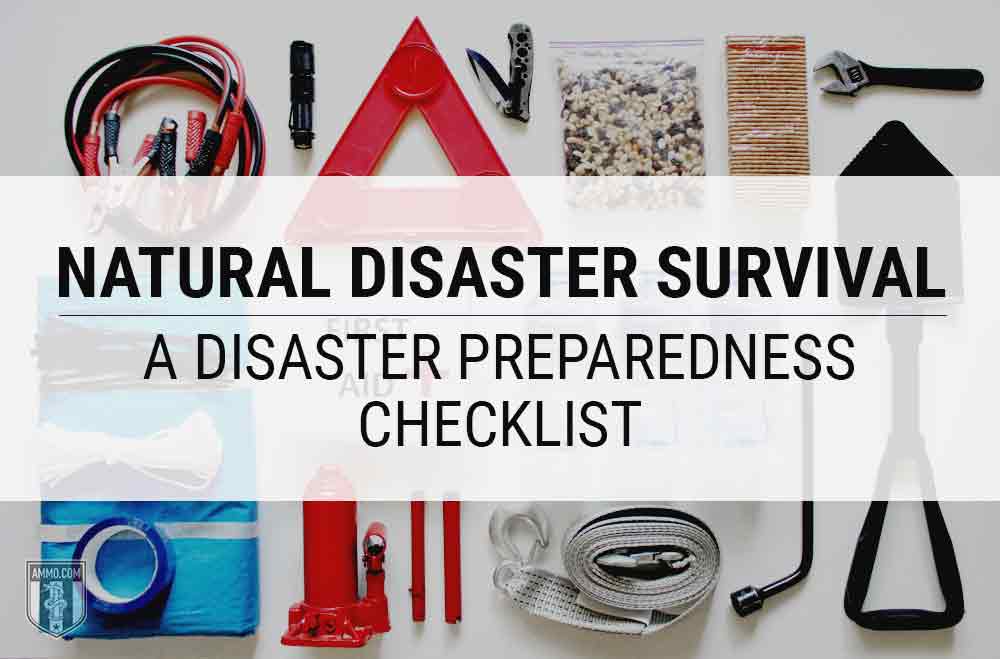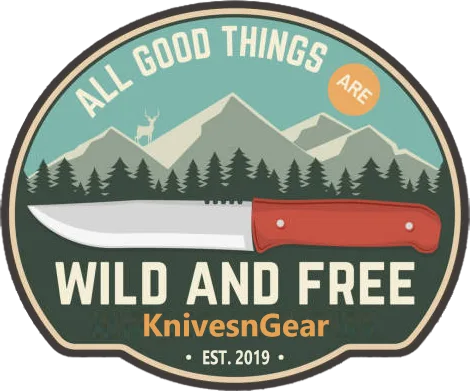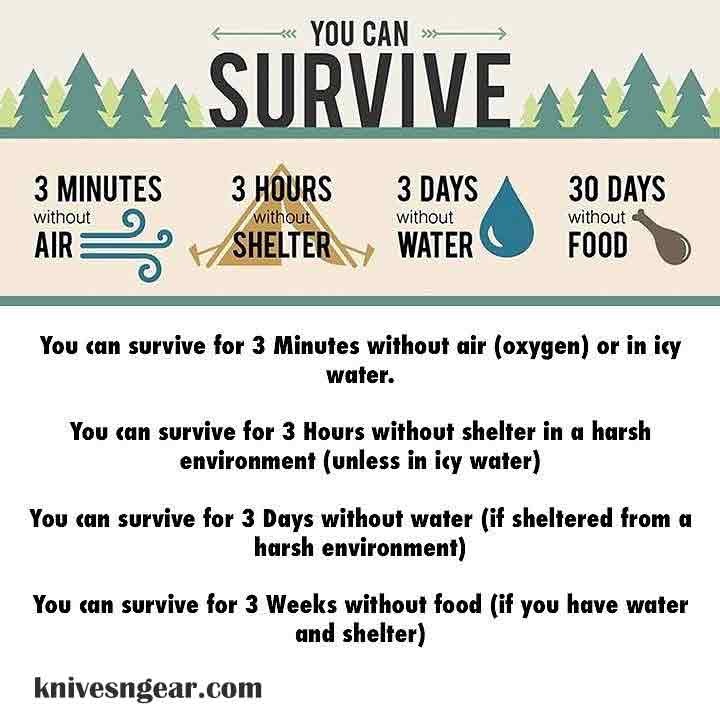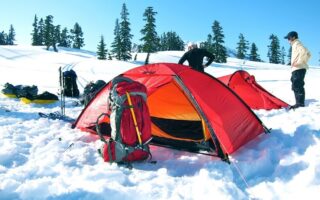Everyone should take some Survival Preparation for any emergency situation, at a time when there is a clear and present danger for nuclear war, terrorist attacks, and weather-related emergencies that threaten everyone within the Homeland, the idea of getting started now with your family survival preparations makes good sense.
In fact, the old boy scout motto to be prepared is spot on in this day and age when both the government and economy are uncertain and possibly facing disaster. Are you ready when the country or the planet goes to hell in a hand-basket?

Survival Preparation
Survival preparations are linked to having a real plan when real-life disasters hit the fan, with many people left wondering “what should I do?” In turn, the best advice is to start a plan now by collecting and organizing the supplies and other resources you will need when the power goes out and the stores are on lockdown.
Also, a Navy Seal team textbook on survival states that having enough food, water, shelter, and physical protection is priority #1 when it comes to the basic survival of the fittest at a time when many people are hunkering down and truly preparing for the worst-case scenario.
You can read How to Stay Alive: The Ultimate Survival Guide for Any Situation – by Bear Grylls to learn in-depth about surviving in wild.
Outdoor Experts Will Have the Edge
At the same time, most outdoor enthusiasts are up to speed on what true preparedness really means at a time when many people could not survive on their own in the great outdoors.
While nature is not a threat, the view from leading military survival trainers is that a truly national or world emergency will create a situation where those people with outdoor skills will most likely survive.
In turn, those people – who are not savvy in living in the outside world – may perish due to either being ignorant or unprepared for living rough in a forest or other outdoor environment.
Government Collapse is No Joke
Imagine sitting down with your family and sorting out basic emergency preparedness that includes how to store and retrieve the food, medicine, weapons, and other supplies you will need when disaster strikes your community or the nation.
In turn, the conversation must point to the storage now of food and other supplies that you and your family will need if society and its commercial infrastructure shut down. Also, there has never been a better time to remind family members to make copies of all important personal documents; such as birth certificates, home mortgage and insurance paperwork, family photos, and other items that prove who you are and where you come from.
Also, thanks to the many interesting and important online emergency preparedness websites – that offer both survival products and valued data – there is an awakening of sorts in the U.S. and overseas about getting on board when it comes to true emergency preparedness basics.
Getting Your Survival Supplies Sorted
According to the Federal Emergency Management Agency (FEMA), there is a massive database of important survival information that every American should be aware of, and then follow when it comes to basic food and survival gear prep.
For instance, FEMA recommends that all Americans have a basic survival or emergency supply of goods at home to include:
- Storage of enough water for at least five days. Water is need for both drinking and sanitation.
- Paper towels, wet wipes, alcohol wipes, and garbage bags for personal sanitation use. A portable toilet is also advised since a community water supply may be shut down during a natural emergency.
- Having a supply of nonperishable food that can last upwards of two weeks.
- A flashlight, extra batteries, a battery-powered hand-crank radio to stay in touch with local and regional government announcements about threats and shelter and survival options.
- A first aid kit and at least a 30-day supply of any and all prescription meds.
- Lots and lots of duct tape for various survival use; including the use of this tape and plastic sheeting for shelter and protection against harmful air and water agents released during an enemy or emergency attack. Also, a natural disaster involving flooding or weather-related emergencies may require various plastic or other materials to serve as protection from the elements.
- A box of disposable dust masks helps you and family members avoid contaminated air, smoke, and other airborne toxins.
- A good tool kit with pliers, wrench, and other items to sort out home needs and emergencies when the power goes out.
- Cases of nonperishable food and a manual can opener.
- A file folder with area maps, contact numbers for FEMA, and other local and national emergency agencies.
- A working cellphone with a solar charger when the power goes down and does not return as quickly as you would like.
- Extra pairs of glasses and plenty of socks and underwear since local stores will be closed. Also, since laundry will be an issue – due to limits on the water – it is always a good idea to have plenty of clean clothing options.
- A case or more of pet food for the cat and dog.
- First-aid books and a full first aid kit with pain meds and plenty of bandages.
- A survival or EDC knife to aid with using supplies and medical kits
- Sleeping bags for every member of the family, and extra blankets and bedding when the power or heating system no longer is working.
- A true Army mess kit with plenty of paper products to ensure you can eat and run.
- A box with plenty of paper, pens, pencils, games for kids, books to read, and games for family activities when the TV and Internet go down.
- A fire extinguisher because “fires happen,” states a FEMA guidebook.
In general, there is a whole list of must-have items that every family needs to have in storage now for true disaster preparedness.
Overall, the view from disaster prep experts is not “if” but “when” a major disaster will strike and result in a grave situation that requires clear heads and enough survival supplies on hand for all family members.

Hi, my name is Taras Kulakov and I’m a knife enthusiast. I have been collecting knives for over 30 years and I’ve owned literally thousands of different models over that time. My goal with this site is to share some of what I’ve learned about knives. You can find more info about Taras Kulakov here.

![How to Baton Wood With a Knife [6 Easy Step] 3 Using Your Knife for Batoning](https://knivesngear.com/wp-content/uploads/2021/01/Using-Your-Knife-for-Batoning.jpg)



I think beginning preventers can start stockpiling non-perishable foods such as canned goods and cereals. As with water supplies, you should have a 30-day supply. You can find a list of food stocks here. There’s no need to buy all your supplies in one trip.